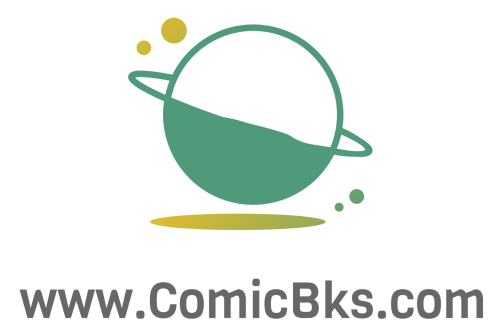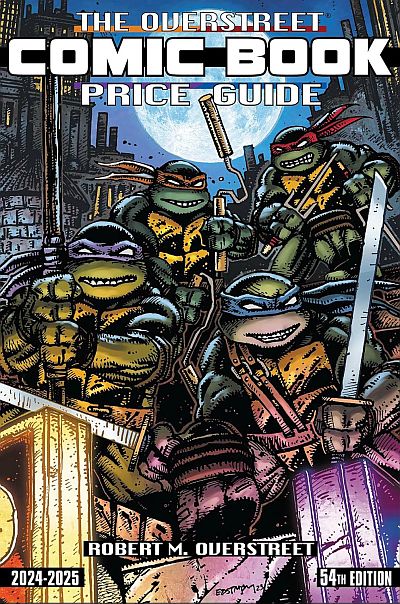Comic books, a unique form of storytelling combining visual art with written narratives, have captivated audiences worldwide for generations. They are typically made up of sequential juxtaposed panels that depict individual scenes, often accompanied by brief descriptive prose and dialog contained in word balloons, emblematic of the genre.
The history of comic books can be traced back to several earlier traditions in publishing, with precursors in 18th-century Japan and 19th-century Europe. However, the modern comic book emerged in the United States in the early 20th century. The introduction of Superman in 1938, in Action Comics #1, marked the beginning of the Golden Age of Comics, a period that saw the creation of numerous other iconic characters and a significant surge in popularity for the medium.
Throughout the decades, comic books have evolved, diversifying in genre, style, and audience. After the Golden Age, the Silver Age (mid-1950s to 1970) introduced a resurgence of superhero comics, followed by the Bronze Age (1970s to 1985), which saw increased complexity and a shift towards darker narratives. The Modern Age (mid-1980s to present) has been marked by a further expansion of genres and artistic styles, as well as a focus on more sophisticated and mature storytelling.
Comic books have had a considerable impact on popular culture and have been instrumental in the rise of iconic characters and franchises. They’ve also been a platform for social commentary and have influenced other forms of media, such as movies, television, and video games. The medium continues to evolve, with the rise of graphic novels and webcomics expanding the boundaries of what can be done with the art form.
The conceptualization phase of comic book creation is where the foundation of the story is laid. It involves several key steps:
A. Idea Generation
This is the initial stage where creators brainstorm various ideas to find an intriguing concept for their comic book.
- Brainstorming: This is a free-form thinking process where creators allow their imagination to run wild, jotting down any and all ideas that come to mind. It’s often done individually or in a group, with the goal of generating a large number of ideas without judgment.
- Theme and Genre Selection: Once a pool of ideas is generated, creators decide on the overarching theme and genre of the comic. This could range from action, fantasy, and science fiction to romance, horror, or a blend of several genres. The theme and genre help in guiding the tone and direction of the story.
B. Story Development
After settling on a basic idea and genre, creators start developing the story in detail.
- Plot Outlining: This involves creating a basic structure for the story. Creators map out the beginning, middle, and end, along with major plot points. This outline serves as a roadmap for the narrative, ensuring that the story has a coherent and compelling progression.
- Character Creation: Characters are the heart of any story. This step involves designing the main and supporting characters, including their backstories, personalities, motivations, and how they change over the course of the story. The characters should be compelling and relatable to engage the readers.
- Setting and World Building: Especially important in genres like fantasy and science fiction, this step involves creating the world in which the story takes place. It encompasses the physical environments, cultural aspects, social structures, and any unique laws of physics or magic that govern the world. World building is crucial as it provides a believable and immersive backdrop for the characters and plot.
Throughout these stages, creators often go back and revise their ideas, ensuring that the theme, plot, characters, and setting all work together to tell a compelling story. This phase sets the stage for the next steps in comic book creation, such as scripting, art development, and eventually, publication.
Creating a comic book is a unique form of storytelling that combines visual art with narrative writing. The process often starts with scriptwriting, which is a crucial phase in comic book creation. Here’s an overview of how comic books are made, focusing on the scriptwriting aspect:
A. Writing the Script
1. Dialogue and Narration
- Dialogue: This is the spoken words of the characters. In comics, dialogues are usually enclosed in balloons. The writer needs to create engaging, character-appropriate dialogues that move the story forward.
- Narration: This refers to the text that is not spoken by characters but provides context, background information, or the inner thoughts of a character. Narrations are often found in caption boxes or thought bubbles.
2. Panel Descriptions
- Visual Details: The scriptwriter provides a description of what happens in each panel. This includes setting, character actions, expressions, and any important visual elements.
- Sequential Flow: The writer must think about how each panel leads to the next, ensuring a coherent and engaging flow of the story. This involves deciding the panel layout and how the story unfolds visually.
B. Script Formatting
- Standard Format: While there’s no universal format for comic scripts, many follow a screenplay-like structure, with clear separations between panels and detailed descriptions for artists.
- Flexibility: Some writers may choose a more freeform style, especially if they have a strong rapport with the artist. The format can vary greatly depending on personal preference and the nature of the collaboration.
C. Collaboration between Writer and Artist
- Initial Discussion: Before starting, the writer and artist often discuss the overall story, themes, and visual style. This collaboration ensures that both are aligned in their vision for the comic.
- Script to Art: The artist interprets the script and brings it to life through sketches, layouts, and final artwork. This stage might involve back-and-forth communication for clarifications or creative adjustments.
- Iterative Process: The creation of a comic is often iterative, with the writer and artist adjusting their work as the story evolves. This collaboration is key to creating a compelling and visually stunning comic book.
The script is the backbone of the comic book, setting the stage for the artist to create the visual elements that bring the story to life. The collaboration between the writer and artist is fundamental in ensuring that the final product is cohesive and effectively communicates the intended narrative.
Creating a comic book involves several intricate steps, especially in the artwork department. Let’s break down the process:
A. Penciling
1. Rough Sketching
This stage is all about laying the groundwork for the comic book. Artists start with rough sketches to establish the basic layout of each page, including where the panels will go, the placement of characters, and the general flow of the action. This sketching phase is crucial for working out the narrative pacing and visual storytelling before any detailed work begins.
2. Detailing Characters and Environments
Once the rough layout is set, artists begin to add details to the characters and environments. This involves refining the drawings to create more defined and character-specific features, fleshing out the backgrounds, and ensuring that each element supports the story. Attention to detail in this phase is vital for creating a compelling and visually engaging world.
B. Inking
1. Finalizing Lines
After the pencil work is complete, an inker (often a different artist from the penciler) goes over the pencil lines with ink. This process involves selecting which pencil lines to keep and which to omit, adding depth and clarity to the artwork. The inker’s style can significantly influence the final look of the comic, as they decide the thickness and darkness of the lines, which affects the overall tone and mood.
2. Emphasizing Shadows and Textures
The inking stage is also where shadows and textures are emphasized. This involves adding black areas and various textures to the artwork, which can convey a sense of lighting, depth, and material properties. The inker plays a crucial role in defining the visual style of the comic through their use of shadow and texture work.
In both penciling and inking, the artists must work closely with the writer and other members of the creative team to ensure that the artwork complements and enhances the story being told. The end goal is to create a seamless blend of narrative and visual art that captures the reader’s imagination.
Creating a comic book involves various steps, and coloring is one of the key stages in bringing the artwork to life. Let’s explore how coloring is done in comic books:
1. Choosing Color Palettes
- Defining Mood and Tone: Color palettes are chosen based on the mood and tone of the story. For instance, a darker, muted palette might be used for a somber or mysterious scene, while bright and vibrant colors could be used for more energetic scenes.
- Character Consistency: Consistency in colors is important for character recognition. Each main character often has a distinct color scheme that follows them throughout the comic.
- Scene and Time of Day: Colors also help in depicting the time of day and setting. For example, a sunset scene would have oranges and purples, while a night scene would be dominated by blues and blacks.
2. Digital vs. Traditional Coloring Techniques
- Traditional Coloring: This involves using physical media such as watercolors, markers, or colored pencils. It’s less common nowadays but still valued for its unique aesthetic.
- Digital Coloring: Most modern comics are colored digitally using software like Adobe Photoshop or Clip Studio Paint. This method offers a vast range of colors, easier corrections, and more efficient workflow.
- Layers and Textures: Digital coloring uses layers, allowing colorists to work on different elements separately (like characters and backgrounds). Textures and effects can also be added digitally.
- Speed and Efficiency: Digital tools allow for faster work and easier replication of colors and styles across multiple panels and pages.
D. Lettering
- Speech Bubbles:
- Placement and Flow: The placement of speech bubbles is crucial for the readability of the comic. They are typically placed in a manner that follows the natural reading flow.
- Style and Font: The style of the speech bubble and the font used can convey different tones of voice or sound levels (whispering, shouting, etc.).
- Sound Effects:
- Integration with Art: Sound effects are often stylistically integrated into the artwork to emphasize certain actions or events.
- Creative Fonts and Designs: The design of sound effect words (like “BAM”, “POW”) varies greatly, using creative fonts and colors to match the impact of the sound they represent.
Coloring and lettering in comic books are both art forms in their own right, requiring a blend of artistic skill and storytelling sensibility to effectively bring a comic book’s narrative to life.
The creation of a comic book involves several steps, including the editing and revision phase, which is critical to ensuring the quality and coherence of the final product. This phase can be broken down into several key components:
A. Reviewing Art and Script
- Script Review: Editors first review the script to ensure it aligns with the story’s vision and is coherent. This includes checking the dialogue, narration, and the overall narrative structure.
- Art Review: Alongside the script, the artwork is scrutinized. This involves assessing the quality of the illustrations, how well they convey the story and emotions, and whether they align with the script.
- Integration of Art and Script: It’s crucial to ensure that the artwork and script complement each other. Editors check if the visual storytelling matches the narrative and if the transitions between panels are smooth and logical.
- Pacing and Layout: The flow of the story is examined. This includes the pacing of the narrative and how the layout of panels affects the reader’s experience.
B. Consistency Checks
- Character and Setting Consistency: Ensuring that characters and settings are visually consistent throughout the comic is vital. This includes checking for changes in character appearances, costumes, and the continuity of the settings.
- Continuity with Previous Issues (if applicable): For ongoing series, it’s important to maintain continuity with previous issues. This involves checking for consistency in storylines, character development, and established facts.
- Fact-Checking: Depending on the genre, fact-checking can be crucial, especially for comics based on real events or science.
C. Feedback and Revisions
- Internal Feedback: Editors and other team members provide feedback on both the script and artwork. This can include suggestions for improvements or highlighting areas that need reworking.
- Revisions: Based on the feedback, the writer and artist make revisions. This can be a back-and-forth process until the desired quality is achieved.
- Proofreading: After revisions, the comic undergoes a final round of proofreading to catch any grammatical errors, typos, or other small mistakes.
- Final Approval: Once the editing team is satisfied, the comic book receives final approval for publication.
This editing and revision process is crucial for maintaining the quality of the comic book, ensuring that the final product is coherent, visually appealing, and engaging for the readers.
As we’ve journeyed through the intricate process of creating a comic book, we’ve delved into its rich history, from the emergence of the modern comic book in early 20th-century America to the diverse and sophisticated storytelling of today’s comics. We’ve explored the conceptualization phase, where ideas are born and stories take shape, and examined the crucial role of scriptwriting in crafting compelling narratives and dialogues.
The artistic journey of a comic book, from initial penciling to the detailed work of inking, coloring, and lettering, has been illuminated, showcasing the immense talent and creativity that goes into every page. We’ve also understood the vital role of editing and revisions in refining and perfecting the comic book, ensuring every element aligns seamlessly to create an engaging and coherent story.
As we conclude this exploration, the journey does not end here. In the second part of this series, we will dive deeper into How Comic Books Are Made. Stay tuned for Part 2, Don’t miss this exciting continuation – join us in discovering the ongoing evolution and enduring magic of comic books.







